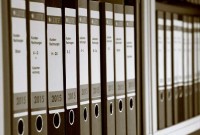- Home
- Business Processes
- Industry Knowledge
- Aerospace Industry
- Automotive Industry
- Banking Domain
- BFSI Industry
- Consumer/ FMCG Industry
- Chemicals Industry
- Engineering & Construction
- Energy Industry
- Education Domain
- Finance Domain
- Hospitality Domain
- Healthcare Industry
- Insurance Domain
- Retail Industry
- Travel and Tourism Domain
- Telecom Industry
- Leadership Skills
- eLearning
- Home
- Functional
- General Ledger (Record to Report)
- Functional Organizational Structures
Functional Organizational Structures
A functional organizational structure is a structure that consists of activities such as coordination, supervision and task allocation. The organizational structure determines how the organization performs or operates. The term organizational structure refers to how the people in an organization are grouped and to whom they report.
A functional organizational structure is a structure that consists of activities such as coordination, supervision and task allocation. The organizational structure determines how the organization performs or operates. The term organizational structure refers to how the people in an organization are grouped and to whom they report. One traditional way of organizing people is by function. Some common functions within an organization include production, marketing, human resources, and accounting. This organizing of specialization leads to operational efficiency, where employees become specialists within their own realm of expertise. Business functions are the external directed activity systems of an organization. They are often referred to as business processes or throughput functions. These business functions are concerned with the provision of goods and services to the external customers of the organization. They express the main purpose of the organization, why the business exists.
Example: A motorcar manufacturer could have parallel process lines for different types of cars (e.g. passenger cars, heavy duty vehicles, microbuses, sports cars, etc.). Other examples are the different degree courses and research programs at a university, the different types of projects in an engineering company, different shops in a region, different types of services of a consultant etc.
Functional organizational structures - Differentiation by Function
The grouping of activities according to the type of function performed is the most commonly used structure. This is the most traditional way of organizing people. You would find this not only being widely used in business organization but also in non-commercial organization such as hospitals, universities etc. Some common functions within an organization include production, marketing, human resources, information technology and finance. This organizing of specialization leads to operational efficiencies where employees become specialists within their own realm of expertise. This structure enhances the experience of each function.
Depending on the nature of the organization and its scope of activities, the functions it has to perform may differ vastly from those of another organization. For instance, one company which undertakes both manufacturing and marketing may have departments engaged in purchase, production, marketing and finance. If it is selling a product such as TV or refrigerator it may also have an after-sale-service department.
On the other hand, a company which is an ancillary to a parent company may have only departments for purchase, manufacturing and finance. Since it is selling its entire production to the mother company there is no need for a marketing department.
Business Support Functions:
The provision of a good or service involves processing, namely the transformation of inputs into outputs. This occurs in phases. For example, the business of producing cars involves procurement of parts, the assembly of different parts into a car, other processing (e.g. painting), as well as marketing, selling and delivery. Likewise, a university course involves different disciplines and subjects. Each phase is a sub-activity system or sub-function with its own expertise or functional specialization. These are provided by the business support systems.
Inward-directed activity systems of an organization are known as business support functions. They are concerned with providing resources (e.g. human, material, technological, knowledge and energy) for the different specializations required by the business functions.
Coordinating/Governance Functions:
All functions have their own internal governance, as well as being governed by coordinating organizational governance. Coordinating governance is self-referring activity systems and includes planning, performance management and various regulatory activities. They coordinate all functions within the organization, the business, business support and organization support functions.
Organization Support Functions:
Self-directed activity systems of an organization are known as organization support functions. They are concerned with establishing and maintaining the organization as an entity. Each organization support function provides support to all functions, business, business support and other organization support functions.
For example, corporate finance provides budgets and accounting services to all functions (even to itself). Likewise, the IT function coordinates the flow of data within and between all functions (including its own data flow). Other organization support functions are administration, knowledge management, human resource development, organizational development, legal services and auditing, amongst others.
Center of Excellence Functions:
Another extension to this model could be creation of center of excellence (COE) centers within the organization. COE refers to a team, a shared facility or an entity that provides leadership, evangelization, best practices, research, support and/or training for a focus area. The focus area in this case might be a technology, a business concept, a skill (e.g. negotiation) or a broad area of study. A center of excellence may also be aimed at revitalizing stalled initiatives. It may also be known as a competency center or a capability center. Such a center may bring together faculty members from different disciplines and provide shared facilities.
Main Features
- The functional structure is most suited when an organization is dealing with a single product or service.
- Functional structure allows for specialization of work
- Ensures the most efficient utilization of human resources.
- There is concentration of authority and responsibility in the top man
- Ensures there are no conflicts arising from different authorities
- The hierarchical line of responsibility is very clearly delineated
- Functional specialists may lose sight of the overall organizational objectives and focus only on functional objectives
- Co-ordination among functional departments is needed due to unique set of constraints and problems
Example - Given below is the functional structure for a Services Organization:
Service Organizations are outsourcing providers of functions that have traditionally been performed and audited within the client (user) organization. Their functional organizational structure is usually divided into :
-
Human Resource( HR)
In most companies, HR is split into Recruitment, Training & Talent management. If the scales of operation are very wide Recruitment, Training and Talent management function like different Departments and the job profiles do not overlap at all.
-
Operations
Operations is the most important part of the actual functioning of the company . It is the main earner of the business because it can ‘billed’ for. All other expenses go as ‘costs’ to the company. This category includes employees who actually execute the processes for the customers.
-
Administration
Administration is again a wide function which looks after the day to day functioning of the company starting from transport ,office maintenance, security and running the cafeteria. Some of these are often called transaction processing.
-
Finance
Finance is a back office function that includes a number of services including billing, account payables, general accounting etc.
-
Business Development(BD)/Marketing
Business development includes marketing and other strategic planning. Important decisions with respect to Mergers and Acquisitions (M&A’s) are taken by this department in close coordination with the Finance department. Scanning the market and drawing a map for the company’s future growth depends largely on the efficiency of this Department.
-
Technical
The Technical Department is also a support function .Unlike in an IT Company, this Department ensures systems are in place. As there is extensive use of technology, the Technical Department has the responsible job of ensuring that all software is running smoothly.
Each of these can function as a separate company in terms of the structure. The C-level Executives have the tough job of coordination between different Departments for a smooth and effective functioning. Roles for each Department are quite clearly defined generally.
Related Links
You May Also Like
-
Defining Organizational Hierarchies
A hierarchy is an ordered series of related objects. You can relate hierarchy with “pyramid” - where each step of the pyramid is subordinate to the one above it. One can use drill up or down to perform multi-dimensional analysis with a hierarchy. Multi-dimensional analysis uses dimension objects organized in a meaningful order and allows users to observe data from various viewpoints.
-
Horizontal or Flat Organizational Structures
Flat organizational structure is an organizational model with relatively few or no levels of middle management between the executives and the frontline employees. Its goal is to have as little hierarchy as possible between management and staff level employees. In a flat organizational structure, employees have increased involvement in the decision-making process.
-
Driving Business Efficiency through Divisions and Departments
In case of a multi-divisional organizational structure, there is one parent company, or head-office. And that parent owns smaller departments, under the same brand name. Dividing the firm, into several self-contained, autonomous units, provides the optimal level of centralization, in a company.
-
There are two commonly used methods of accounting - Cash Basis and the Accruals Basis. Understand the difference between accruals and reversals. Recap the earlier discussion we had on accruals and reversals and see the comparison between these two different but related accounting concepts. Understand how the action of accruing results in reversals subsequently in the accounting cycle.
-
As the business grows, the company may want to transition to a branch structure as branches are allowed to conduct a much broader range of activity than representative offices. Branches can buy and sell goods, sign contracts, build things, render services, and generally everything that a regular business can do. A company expands its business by opening up its branch offices in various parts of the country as well as in other countries.
-
A joint venture (JV) is a business agreement in which the parties agree to develop, for a finite time, a new entity and new assets by contributing equity. They exercise control over the enterprise and consequently share revenues, expenses and assets. A joint venture takes place when two or more parties come together to take on one project.
-
GL - Different Accounting Methods
The accounting method refers to the rules a company follows in reporting revenues and expenses. Understand the two common systems of bookkeeping, single, and double-entry accounting systems. Learners will also understand the two most common accounting methods; cash and accrual methods of accounting and the advantages and disadvantages of using them.
-
An allocation is a process of shifting overhead costs to cost objects, using a rational basis of allotment. Understand what is the meaning of allocation in the accounting context and how defining mass allocations simplifies the process of allocating overheads to various accounting segments. Explore types of allocations and see some practical examples of mass allocations in real business situations.
-
After reading this article the learner should be able to understand the meaning of intercompany and different types of intercompany transactions that can occur. Understand why intercompany transactions are addressed when preparing consolidated financial statements, differentiate between upstream and downstream intercompany transactions, and understand the concept of intercompany reconciliations.
-
What is Accounting & Book Keeping
Accounting is a process designed to capture the economic impact of everyday transactions. Each day, many events and activities occur in an entity, these events and activities are in the normal course of business; however, each of these events may or may not have an economic impact. Events or activities that have an effect on the accounting equation are accounting events.
Explore Our Free Training Articles or
Sign Up to Start With Our eLearning Courses

About Us
Learning
© 2023 TechnoFunc, All Rights Reserved











